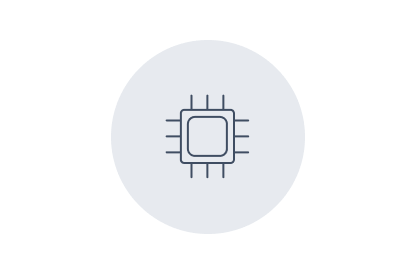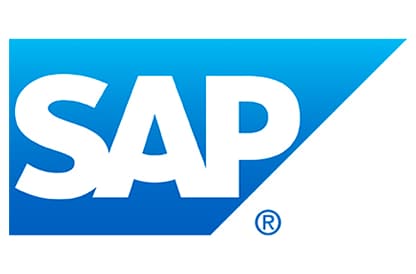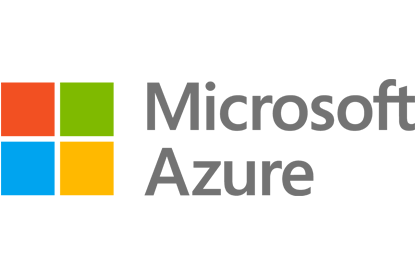Why OpenText
Why OpenText
Overview Why OpenText
OpenText brings decades of expertise to help you unlock data, connect people and processes, and fuel AI with trust
Manage and connect data
Unify data seamlessly across your enterprise to eliminate silos, improve collaboration, and reduce risks
AI-ready information
Get AI-ready and transform your data into structured, accessible, optimized information
Built-in security and compliance
Meet regulatory and compliance requirements and protect your information throughout its lifecycle
Empowering people
Overview Empowering people
OpenText helps people manage content, automate work, use AI, and collaborate to boost productivity
Customers
See how thousands of companies around the world are succeeding with innovative solutions from OpenText
Employees
Our people are our greatest asset; they are the life of the OpenText brand and values
Corporate Responsibility
Learn how we aspire to advance societal goals and accelerate positive change
Partners
Find a highly skilled OpenText partner with the right solution to enable digital transformation
How we compare
Content Management
Service Management
Deploy anywhere
Overview Deployment options
Explore scalable and flexible deployment options for global organizations of any size
Sovereign cloud
Local control. Global scale. Trusted AI
Private cloud
Your cloud, your control
On-premises
Free up resources, optimize performance and rapidly address issues
Public cloud
Run anywhere and scale globally in the public cloud of your choice
AI leadership
Overview Aviator AI
See information in new ways
OpenText™ Aviator AI
AI that understands your business, your data, and your goals
OpenText™ MyAviator
Say hello to faster decisions. Your secure personal AI assistant is ready to get to work
OpenText™ Business Network Aviator
Gain better insights with generative AI for supply chains
OpenText™ Content Aviator
Power work with AI content management and an intelligent AI content assistant
OpenText™ Cybersecurity Aviator
Improve your security posture with AI cybersecurity and agile threat detection
OpenText™ DevOps Aviator
Enable faster app delivery, development, and automated software testing
OpenText™ Experience Aviator
Elevate customer communications and experiences for customer success
OpenText™ Service Management Aviator
Empower users, service agents, and IT staff to find the answers they need
Aviator AI
Overview Aviator AI
See information in new ways
OpenText™ Aviator AI
AI that understands your business, your data, and your goals
OpenText™ MyAviator
Say hello to faster decisions. Your secure personal AI assistant is ready to get to work
OpenText™ Business Network Aviator
Gain better insights with generative AI for supply chains
OpenText™ Content Aviator
Power work with AI content management and an intelligent AI content assistant
OpenText™ Cybersecurity Aviator
Improve your security posture with AI cybersecurity and agile threat detection
OpenText™ DevOps Aviator
Enable faster app delivery, development, and automated software testing
OpenText™ Experience Aviator
Elevate customer communications and experiences for customer success
OpenText™ Service Management Aviator
Empower users, service agents, and IT staff to find the answers they need
Analytics
Overview Analytics
Predict, act, and win with real-time analytics on a smarter data platform
OpenText™ Aviator Search(AI)
Give users access to the answers they need, faster and easier, with multi-repository AI-based search that lets you contextualize everything from clicks to conversations
Business Network
Overview Business Network
Connect once, reach anything with a secure B2B integration platform
Content
Overview Content
Reimagine knowledge with AI-ready content management solutions
OpenText™ Content Aviator(AI)
Supercharge intelligent workspaces with AI to modernize work
Cybersecurity
Overview Cybersecurity
Integrated cybersecurity solutions for enterprise protection
OpenText Cybersecurity for SMBs & MSPs
Purpose built data protection and security solutions
OpenText™ Cybersecurity Aviator(AI)
Reinvent threat hunting to improve security posture with the power of agile AI
DevOps
Overview DevOps
Ship better software—faster—with AI-driven DevOps automation, testing, and quality
Experience
Overview Experience
Reimagine conversations with unforgettable customer experiences
Observability and Service Management
Overview Observability and Service Management
Get the clarity needed to cut the cost and complexity of IT operations
OpenText™ Service Management Aviator(AI)
Redefine Tier 1 business support functions with self-service capabilities from private generative AI
APIs
Overview APIs
Build custom applications using proven OpenText Information Management technology
OpenText™ API Services
Build it your way with OpenText Cloud APIs that create the real-time information flows that enable custom applications and workflows
Device and Data Protection
Overview Device and Data Protection
Protect what matters, recover when it counts
Unified Endpoint Management Tools
- OpenText™ Endpoint Management
- OpenText™ ZENworks Suite
- OpenText™ ZENworks Service Desk
- OpenText™ ZENworks Configuration Management
- OpenText™ ZENworks Endpoint Security Management
- OpenText™ ZENworks Full Disk Encryption
- OpenText™ ZENworks Endpoint Software Patch Management
- OpenText™ ZENworks Asset Management
Solutions
Trusted Data & AI
Overview Trusted Data & AI
Secure information management meets trusted AI
OpenText AI Data Platform
A unified data framework to elevate data and AI trust
OpenText Aviator Studio
A place where you can build, deploy, and iterate on agents in your data's language
OpenText Discovery
A set of tools to help ingest data and automate metadata tagging to fuel AI
OpenText Data Compliance
A suite of services and APIs that make governance proactive and persistent
OpenText Aviator AI Services
Professional services experts who help you on your AI journey
Information Reimagined
Overview Information Reimagined
Get greater visibility and sharper insights from AI-driven information management. Ready to see how?
Knowledge reimagined
Transform daily work with enterprise content management powered by AI
Service Management reimagined
Cut the cost and complexity of IT service management, AIOps, and observability
Connections reimagined
AI-powered B2B integration for supply chain success
Conversations reimagined
Drive value, growth, and loyalty with connected customer experiences
Engineering reimagined
Agile development and software delivery? It only seems impossible
Security reimagined
Cybersecurity for the Enterprise
Decisions reimagined
Unlock insights with AI data analytics
Artificial Intelligence
Overview Aviator AI
See information in new ways
OpenText™ Aviator AI
AI that understands your business, your data, and your goals
OpenText™ MyAviator
Say hello to faster decisions. Your secure personal AI assistant is ready to get to work
OpenText™ Business Network Aviator
Gain better insights with generative AI for supply chains
OpenText™ Content Aviator
Power work with AI content management and an intelligent AI content assistant
OpenText™ Cybersecurity Aviator
Improve your security posture with AI cybersecurity and agile threat detection
OpenText™ DevOps Aviator
Enable faster app delivery, development, and automated software testing
OpenText™ Experience Aviator
Elevate customer communications and experiences for customer success
OpenText™ Service Management Aviator
Empower users, service agents, and IT staff to find the answers they need
Industry
Overview Industry solutions
Improve efficiency, security, and customer satisfaction with OpenText
Energy and resources
Transform energy and resources operations with cloud, cybersecurity, and AI
Financial services
Boost customer experience, compliance, and efficiency with AI
Government
Reimagine your mission with government-secure information management
Healthcare and life sciences
Improve care delivery and patient engagement with AI-powered solutions
Legal
Modernize legal teams with automated, AI-powered legal tech solutions
Manufacturing
Modernize manufacturing operations and logistics to reduce costs and ensure compliance
Retail and consumer goods
Enhance consumer engagement with omnichannel retail solutions and AI
Enterprise Application
Overview Solutions for Enterprise Applications
Run processes faster and with less risk
Services
Services
Overview Services
Achieve digital transformation with guidance from certified experts
Professional Services
Modernize your information management with certified experts
Customer Success Services
Meet business goals with expert guidance, managed services, and more
Support Services
Turn support into your strategic advantage
Managed Services
Free up your internal teams with expert IT service management
Learning Services
Discover training options to help users of all skill levels effectively adopt and use OpenText products
Professional Services
Overview Professional Services
Modernize your information management with certified experts
Customer Success Services
Overview Customer Success Services
Meet business goals with expert guidance, managed services, and more
Support Services
Overview Support Services
Turn support into your strategic advantage
Managed Services
Overview Managed Services
Free up your internal teams with expert IT service management
Learning Services
Overview Learning Services
Discover training options to help users of all skill levels effectively adopt and use OpenText products
Partners
Find a Partner
Overview Find a partner
Find a highly skilled OpenText partner with the right solution to enable digital transformation
Cloud Partners
Overview Cloud Partners
OpenText partners with leading cloud infrastructure providers to offer the flexibility to run OpenText solutions anywhere
Enterprise Application Partners
Overview Enterprise Application Partners
OpenText partners with top enterprise app providers to unlock unstructured content for better business insights
Partner Solutions
Overview Partner Solutions
Discover flexible and innovative offerings designed to add value to OpenText solutions
Resources for Partners
Overview Resources for Partners
Discover the resources available to support and grow Partner capabilities
Support
Overview Customer Support
Get expert product and service support to accelerate issue resolution and keep business flows running efficiently
Resources
Overview Resources
Explore detailed services and consulting presentations, briefs, documentation and other resources
Choose your region:
Europe, Middle East and Africa
Asia–Pacific
 IT Security Provider
IT Security Provider
IT firm uses ArcSight to dramatically improve cybersecurity visibility for a telecommunications company

Products and services
Outcomes
- Enabled customer to monitor 2,000 systems
- Simplified monitoring of applications created in-house
- Customized alerts to increase accuracy of threat detection
- Dramatically improved security visibility and significantly reduces time to detect threats
Challenge
Help protect the operations and reputation of a large telecommunications company from cyber attack.
One such customer is a large telecommunications provider that contacted the IT security provider to help resolve a cybersecurity problem. The company’s complex IT environment and multiple levels of bureaucracy were causing headaches for IT employees trying to monitor the company’s environment for threats.
To detect security breaches or suspicious behavior, the telco needed to monitor data logs from thousands of devices and applications. This included applications created by the company’s in-house developers, as well as many types of telecommunications equipment. “We’re talking about a very large number of systems,” says a manager at the IT security provider.
Interpreting the deluge of data logs generated by these devices and applications was difficult. The number of applications and devices was also rapidly increasing.
Collecting and ingesting the logs was time consuming. IT employees couldn’t access the systems and logs belonging to some business units, but instead needed to ask for help from relevant managers. Someone also had to sign forms giving them permission to collect the data.
Even if employees did collect, ingest, and analyze the log data, they couldn’t do it quickly enough to respond to breaches. “It was taking too much time. If there was an attack, it would have been finished before they could act to prevent or stop it,” says the manager. As a result, the company did not comprehensively monitor its systems for security threats.
There was also a risk that any of the company’s many employees would inadvertently cause a security breach. They had minimal understanding of cybersecurity, and might be lured by attackers to click on links to malware or phishing schemes. Without a way to quickly monitor network activity, the company didn’t know if users were adhering to security rules. “Their security department created security policies, but if users didn’t abide by them there was no way to catch them,” the manager says.
The telco was therefore highly vulnerable to data breaches. The company had also failed an audit, designed to check that systems followed the Payment Card Industry Data Security Standard (PCI DSS). If the company didn’t resolve this problem, there would be potential financial sanctions.
Details
Solution
To speed up the telco’s ability to detect threats, employees needed a centralized mechanism to collect and ingest data logs from the entire business. They also needed a way to rapidly analyze the logs.
To achieve this, the company purchased a security information and event monitoring (SIEM) solution. This would automate the collection and analysis of log data, allowing IT employees to respond to threats much faster.
The company tested SIEM solutions from LogRhythm and OpenText, and evaluated a solution from RSA. Like many of the IT security provider’s customers, the telco scrutinized the products in detail, spending a year testing Enterprise Security Manager (ESM) proof of concept. “Our customers want to dig deep into the functionality,” the manager says.
By late 2016, the company chose the OpenText solution, primarily because employees could integrate with various applications and devices, and because the system could be customized to detect threats more accurately and in real-time. “The Micro Focus (now OpenText) product’s flexibility was the deciding factor,” says another manager at the IT security provider.
This is for companies that don’t just want a token SIEM. The system is very flexible. They can customize it and fine-tune it any way they want.
Results
Simplifies security
The telco was in the final stages of integrating ESM at the time of writing. The IT security provider expects the solution will provide significant benefits.
One will be simplifying the task of monitoring the complex IT environment. The telco has connected more than 2,000 systems to ESM. “Even the employee attendance machine is connected to ArcSight,” the manager says.
The OpenText solution also makes it easier to monitor applications that the telco has customized. To connect some SIEM tools to these applications, employees would usually need assistance from the software vendor that created the applications. But they found this wasn’t necessary using ESM.
Processing the log data was also much easier. Previously, even if IT staff members had access to log data, they weren’t always able to understand it, the manager notes. “They would have to ask, ‘What am I looking for? How can I detect if something is wrong?’” he says. By contrast, the OpenText solution performs the difficult and repetitive part of this process automatically. “ArcSight opens the logs, and reads and classifies them. It formats them in a way that administrators can understand,” he says.
By collecting data from many systems, the ESM gives the company a greater likelihood of detecting suspicious network activity. This allows staff members to respond to security events to determine the threat risk, reducing the risk of attacks interrupting operations or damaging the company’s reputation. It will also save employees hours of work.
The company received encouraging evidence of this during the proof of concept test, when ESM alerted employees to a vulnerability they had not previously seen. “It was something they could not detect before. That was a major convincing argument to purchase ArcSight,” the manager says.
Provides accurate threat detection
Another important benefit is that users can customize ESM so that it provides more accurate alerts about potential breaches.
For example, organizations can create use case rules and content that directs the SIEM which specific system activity they are most concerned about. This is particularly helpful for banks, which can create rules to alert them to certain activity involving their databases.
“The system is very flexible. They can customize it and fine-tune it any way they want,” says the manager. “This is for companies that don’t just want a token SIEM.”
These rules can be used to identify potential network activity as suspicious, even if it doesn’t technically breach company policies. For example, during the ESM proof of concept test, a use case rule alerted the telco to a user logging on to the organizations’ systems at 3 a.m.
Addresses compliance
An increasing number of the IT security provider’s customers are requesting SIEM tools to address regulatory compliance, according to another manager. “We are seeing [governments] enforcing banks to go through a SIEM solution for PCI compliance. I’m seeing customers request that more and more,” she adds. With the ESM implementation nearly complete, the telco is already looking at other ways it can improve security. This could include purchasing Fortify, which tests software code for vulnerabilities.
Whenever we have a large customer with a lot of customizable solutions, then we go with ArcSight.
About IT Security Provider

As a provider of innovative cybersecurity solutions to customers around the world, this IT security provider, who prefers to remain anonymous, understands the challenges of securing large and complex IT environments. The company has a customer portfolio that includes banks, manufacturers, and airlines. These clients utilize the solutions the IT security provider sells to collectively monitor thousands of devices, systems, and applications. Some have a significant workforce with minimal IT knowledge, which creates security risks and technological gaps.





